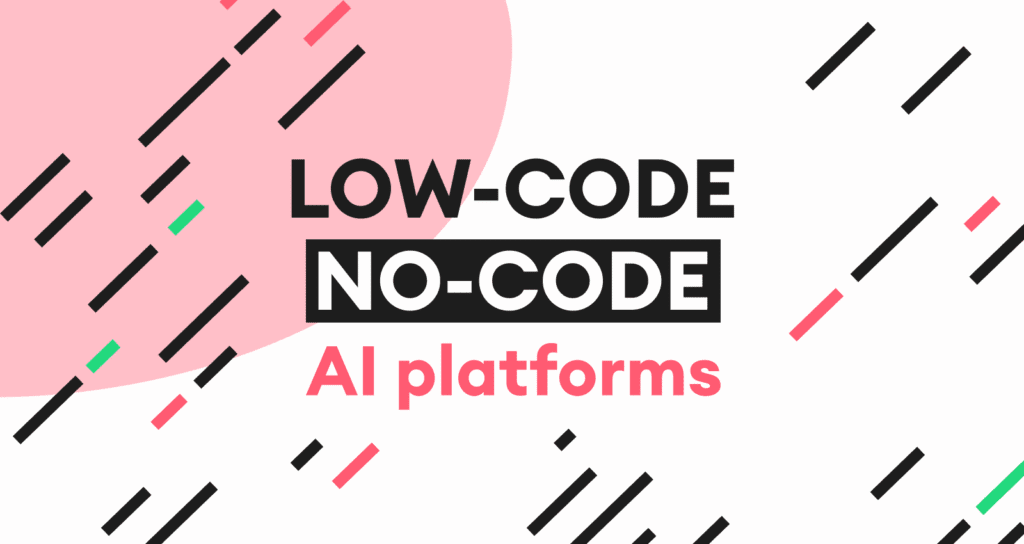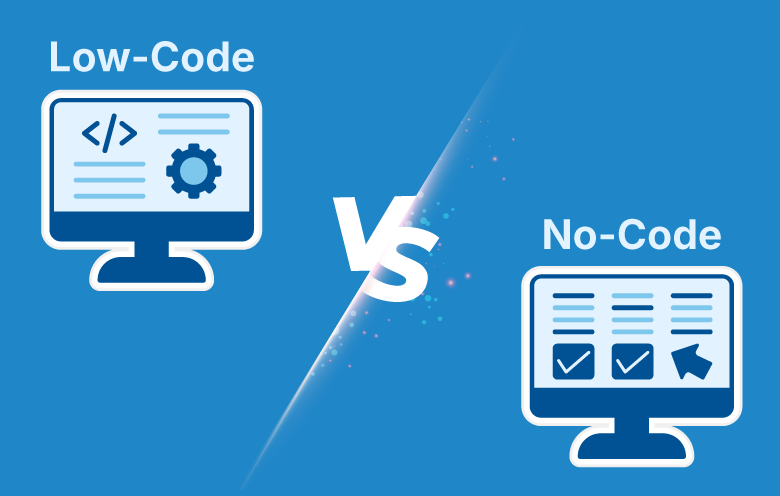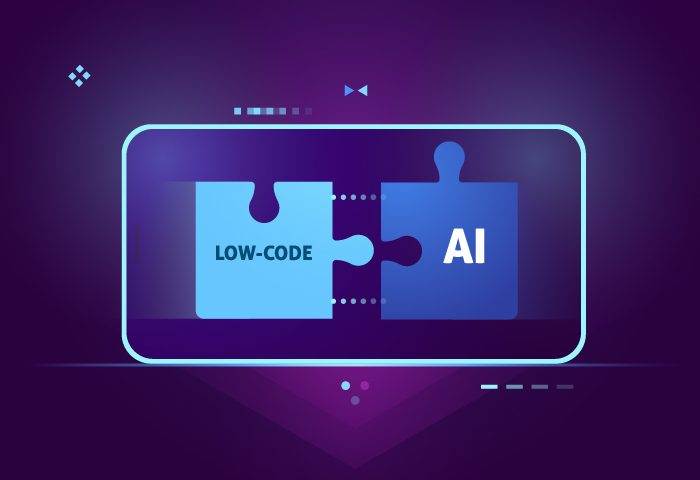Understanding Your Startup’s AI Needs

Defining your business goals and AI objectives
Before diving into platform selection, meticulously define your startup’s core business goals. What problem are you solving? What key performance indicators (KPIs) will measure success? For instance, a marketing startup might aim to increase lead generation by 20% within six months, while a healthcare startup may focus on improving diagnostic accuracy by 15%. These overarching goals will directly inform your AI objectives.
Next, translate these business goals into specific, measurable AI objectives. A common mistake we see is a vague aim like “improving customer service.” Instead, clearly articulate how AI will achieve this. Will you use AI-powered chatbots to handle initial customer inquiries, reducing agent workload by X%? Or will you employ sentiment analysis to proactively identify and address negative customer feedback, thus lowering churn rates? Quantifiable objectives are crucial for tracking progress and demonstrating ROI. In our experience, startups that clearly define these objectives early on are far more likely to successfully implement AI solutions.
Launch Your App Today
Ready to launch? Skip the tech stress. Describe, Build, Launch in three simple steps.
BuildConsider different AI approaches to reach your goals. For example, improving customer service could involve natural language processing (NLP) for chatbots, or machine learning (ML) for predictive modeling of customer churn. The level of technical expertise required will greatly influence your choice between low-code and no-code platforms. Remember, the best AI solution isn’t necessarily the most technically advanced; it’s the one that best aligns with your specific business needs and resources. A well-defined strategy will guide your selection process and ensure your AI investment delivers tangible results.
Assessing technical expertise and resources within the team
Before selecting a low-code or no-code AI platform, honestly assess your team’s existing technical capabilities. Do you have developers proficient in Python, R, or other programming languages commonly used in AI/ML? A common mistake we see is startups assuming no-code is always the better option, overlooking the potential limitations for more complex projects. In our experience, a team with even basic programming skills can significantly benefit from a low-code approach, allowing for greater customization and scalability than a purely no-code solution offers.
Consider not only the *number* of developers but also their specific skill sets. For example, a team strong in data engineering might find a low-code platform ideal for building robust data pipelines, but still require assistance with the more intricate aspects of model training and deployment. Conversely, a team lacking data science expertise might benefit most from a no-code platform, focusing on integrating pre-built models and readily available functionalities. Remember to factor in the time commitment involved in upskilling your team—this can significantly impact your project timeline and budget.
Resource allocation is equally crucial. No-code platforms typically require less upfront investment in infrastructure and developer salaries. However, they might incur higher costs over time if your needs outgrow the platform’s capabilities or necessitate custom integrations. Low-code platforms offer a balance, demanding a moderate level of technical expertise while enabling greater control and customization, potentially reducing long-term costs associated with limitations. Carefully weigh these considerations alongside your budget and long-term AI goals to make an informed decision. Don’t underestimate the value of a thorough skills audit before choosing your AI development path.
Identifying key performance indicators (KPIs) for AI implementation
Choosing the right AI platform hinges on understanding how you’ll measure its success. Defining clear key performance indicators (KPIs) from the outset is crucial. In our experience, neglecting this step leads to wasted resources and a lack of demonstrable ROI. Instead of focusing solely on broad metrics like “increased efficiency,” drill down into specific, measurable goals. For example, if your AI is automating customer service, track metrics like average handling time, customer satisfaction scores (CSAT), and the resolution rate of support tickets.
A common mistake we see is selecting KPIs that are difficult or impossible to track. Ensure your chosen KPIs align with readily available data within your existing systems. For instance, if your goal is to improve lead conversion rates using an AI-powered sales tool, integrate your CRM with your AI platform to track the impact directly. Consider also secondary metrics. While your primary KPI might be improved sales, secondary KPIs like lead qualification time and sales team efficiency can offer a more holistic view of the AI’s impact. Don’t forget to establish baseline measurements before implementation to accurately gauge improvement after the AI is deployed.
Furthermore, remember that the right KPIs will vary depending on your AI application. For a fraud detection system, false positive rate and detection accuracy are critical. If your AI is generating product recommendations, click-through rates, conversion rates, and average order value become paramount. Regularly reviewing and adjusting your KPIs is essential; what matters most might change as your startup grows and your AI solution evolves. By proactively managing and analyzing your KPIs, you can ensure your AI investment delivers tangible value and provides valuable insights to guide your strategic decisions.
Introduction to No-Code AI Platforms

What are no-code AI tools and how do they work?
No-code AI platforms empower users to build and deploy artificial intelligence applications without writing a single line of code. These platforms achieve this through visual interfaces, drag-and-drop functionality, and pre-built AI modules. In essence, they abstract away the complexities of traditional AI development, making advanced technologies accessible to a much broader audience. This democratization of AI is a key driver of their increasing popularity.
These tools typically work by offering a library of pre-trained machine learning models and algorithms. Users select the relevant model based on their needs – for instance, choosing a natural language processing (NLP) model for chatbot development or a computer vision model for image classification. They then configure parameters, input data, and define the desired outputs using intuitive visual tools. For example, one might use a platform to train a model to identify defects in manufactured products by simply uploading images and labeling the defects, rather than writing complex image processing scripts. A common mistake we see is underestimating the importance of high-quality data; even the most sophisticated no-code platform won’t deliver accurate results with poor input.
The benefits are clear. No-code AI significantly reduces development time and costs, allowing startups to quickly prototype and deploy AI solutions. We’ve witnessed firsthand how these platforms enable businesses with limited technical expertise to leverage AI for tasks such as customer service automation, predictive analytics, and fraud detection. However, it’s crucial to understand that while these platforms simplify development, they may not offer the same level of customization and control as traditional coding approaches. The choice between no-code and low-code depends heavily on the complexity of your project and your team’s existing technical skills.
Exploring popular no-code AI platforms and their features
Several robust no-code AI platforms cater to varying needs. One popular choice is Google Cloud AI Platform’s AutoML, offering pre-trained models and an intuitive interface for tasks like image classification and natural language processing. In our experience, its ease of use makes it ideal for startups lacking extensive data science expertise, though scalability might become a concern for very large datasets. Another strong contender is Lobe, particularly useful for building computer vision applications. Its drag-and-drop interface and straightforward training process make it accessible even for users with minimal coding knowledge. However, Lobe’s capabilities are currently more limited than some other platforms.
A common mistake we see is focusing solely on the platform’s ease of use without considering its limitations. For instance, while platforms like Obviously AI excel at simplifying complex model building, their reliance on pre-trained models might restrict customization, potentially impacting the accuracy for niche applications. We’ve found that a careful assessment of your project requirements – dataset size, desired accuracy, and the level of customization needed – is crucial for selecting the right platform. For example, a startup developing a sophisticated chatbot might benefit from a more customizable, albeit potentially more complex, platform, while a simpler application like image tagging might be perfectly served by a streamlined no-code solution.
Finally, consider the platform’s integration capabilities. Seamless integration with your existing tech stack is vital. Some platforms offer robust APIs and SDKs, enabling smoother integration with various applications and services, while others might have limited integration options. Before committing, thoroughly research the platform’s documentation and community support. Active community forums and comprehensive documentation often indicate a mature and well-supported platform, which can be particularly crucial during the initial stages of development when support might be needed. choosing the right platform requires a balanced approach, carefully weighing user-friendliness against the scope and complexity of your AI project.
Advantages and limitations of using no-code solutions for AI
No-code AI platforms offer compelling advantages for startups, particularly those with limited technical resources. Their ease of use allows rapid prototyping and deployment of AI models, accelerating time-to-market. In our experience, this speed is crucial for startups navigating competitive landscapes. For example, a client recently used a no-code platform to build a customer churn prediction model in weeks, a task that would have taken months using traditional coding methods. This agility allows for faster iteration and experimentation with different AI approaches.
However, the simplicity of no-code platforms comes with limitations. A common mistake we see is underestimating the need for data preparation and cleaning. While these platforms often offer basic data handling tools, complex datasets may require more sophisticated techniques beyond their capabilities. Furthermore, customization options are often restricted. While suitable for common AI tasks like image classification or sentiment analysis, no-code solutions may struggle with highly specialized or niche applications demanding bespoke algorithms. This constraint can limit the scalability and long-term flexibility of your AI solutions.
Finally, consider the potential for vendor lock-in. Migrating from one no-code platform to another can be difficult, especially if your models become highly dependent on platform-specific features. Before selecting a platform, carefully evaluate its long-term viability, considering factors like community support, API access, and the vendor’s roadmap. Thoroughly understanding these limitations is key to making an informed decision and preventing potential roadblocks in your startup’s AI journey.
Deep Dive into Enterprise Low-Code AI Platforms

Understanding low-code development and its benefits for AI
Low-code development drastically reduces the amount of hand-coding required to build applications. Instead of writing thousands of lines of code, developers utilize visual interfaces, pre-built modules, and drag-and-drop functionality to assemble applications. This significantly accelerates the development lifecycle, a critical advantage when integrating AI capabilities where iterative experimentation is key. In our experience, this speed translates directly to faster time-to-market for AI-powered products.
One of the most significant benefits for AI integration is the democratization of development. Low-code platforms empower citizen developers—individuals with limited traditional coding experience—to build and deploy AI-driven solutions. This is particularly valuable for startups with limited resources, allowing them to leverage AI without needing a large team of specialized programmers. For example, a marketing team could build a custom AI-powered chatbot for customer support using a low-code platform, freeing up engineering resources for more complex projects. However, a common mistake we see is underestimating the need for skilled oversight, even with low-code solutions. Robust AI models still require expertise in data science and model deployment.
Furthermore, low-code platforms offer inherent flexibility and scalability. As your AI needs evolve, you can easily adapt and extend your applications without being locked into a rigid codebase. This agility is paramount in the fast-paced world of AI, where algorithms and models are continuously improved and refined. We’ve seen numerous startups successfully leverage this flexibility to iterate quickly on their AI-driven features, responding swiftly to market feedback and user needs. This iterative development approach is often impossible with traditional, highly customized code.
Key features of enterprise-grade low-code AI platforms
Enterprise-grade low-code AI platforms must offer more than just ease of use; they need robust features to handle the complexities of large-scale deployments. In our experience, successful platforms prioritize scalability and security. Scalability means the platform can readily handle increasing data volumes and user demands without performance degradation. Security features, such as granular access controls, data encryption both in transit and at rest, and robust auditing capabilities, are paramount for protecting sensitive business information. A common oversight we see is neglecting the importance of integration capabilities—a platform unable to seamlessly integrate with existing enterprise systems will severely limit its value.
Beyond the foundational aspects, enterprise solutions demand advanced capabilities. Model versioning and management is critical for tracking AI model performance and facilitating rollbacks if needed. Furthermore, explainability and interpretability features are becoming increasingly important, particularly in regulated industries. These features provide insights into how AI models arrive at their decisions, enhancing trust and enabling responsible AI development. For instance, one client struggled with implementing a fraud detection model until they adopted a platform with detailed model explainability; it allowed them to identify biases and improve model accuracy significantly.
Finally, effective monitoring and alerting systems are essential. Enterprise-grade platforms should provide comprehensive dashboards and notifications to track model performance, identify potential issues (like data drift), and alert relevant personnel proactively. This proactive approach is crucial for maintaining optimal performance and preventing costly disruptions. We’ve found that platforms offering these features, combined with strong support and training resources, deliver the greatest return on investment for organizations.
Comparing low-code AI platforms based on scalability, security, and integration
Scalability is paramount when selecting a low-code AI platform. In our experience, startups often underestimate future growth. Consider a platform’s ability to handle increasing data volumes and user demands. Look for features like horizontal scaling, allowing you to easily add more computing resources as needed, and cloud-native architectures for inherent flexibility. A platform lacking robust scalability can become a significant bottleneck hindering your AI application’s expansion.
Security is non-negotiable. A common mistake we see is overlooking the platform’s inherent security features. Don’t just rely on generic assurances; delve into the specifics. Does the platform offer role-based access control (RBAC), data encryption both in transit and at rest, and rigorous audit trails? Furthermore, investigate their compliance certifications (e.g., ISO 27001, SOC 2). For example, we recently worked with a client who chose a platform lacking robust encryption, leading to a costly security breach. Prioritizing security from the outset is crucial for maintaining user trust and adhering to regulatory standards.
Integration capabilities are equally crucial. A successful AI solution rarely operates in isolation. Assess the platform’s ability to seamlessly integrate with your existing systems – CRM, ERP, databases, etc. Look for support for common APIs (Application Programming Interfaces) like REST and GraphQL, as well as pre-built connectors for popular enterprise systems. A platform with limited integration options will create significant development challenges and could hinder your AI application’s effectiveness. For instance, a platform offering easy integration with Salesforce could drastically reduce development time and complexity compared to one requiring extensive custom coding.
No-Code vs. Low-Code: A Detailed Comparison

Cost-effectiveness and Return on Investment (ROI)
No-code platforms often present a lower upfront cost, making them attractive to startups with limited budgets. However, this initial savings can be deceptive. In our experience, the simplicity can lead to limitations later, necessitating costly workarounds or even a complete platform migration. Hidden costs like extensive customization or integration complexities can quickly erode the perceived cost advantage.
Low-code platforms, while having a higher initial investment, usually offer greater scalability and flexibility. This translates to a potentially higher ROI in the long run. For example, a startup using a low-code platform might initially spend more on licensing but save significantly on development time and ongoing maintenance, allowing for faster iteration and quicker market entry. A common mistake we see is underestimating the long-term costs associated with no-code limitations. These limitations often manifest as bottlenecks in growth and innovation, ultimately costing the company more in lost opportunities.
Ultimately, the best choice depends on your specific needs and long-term vision. Consider factors like the complexity of your AI application, your team’s technical expertise, and your projected growth trajectory. A thorough cost-benefit analysis, encompassing both immediate expenses and future scalability, is crucial. Don’t solely focus on the initial price tag; prioritize a solution that empowers your team to achieve your AI goals efficiently and sustainably, yielding the strongest possible return on investment.
Development speed and time to market
No-code AI platforms prioritize speed and simplicity. Their drag-and-drop interfaces and pre-built components significantly reduce development time, often leading to a much faster time to market. In our experience, a simple chatbot or basic image recognition model can be deployed within days using a no-code solution, compared to weeks or even months with traditional coding. This is ideal for startups with limited resources or those needing a quick proof-of-concept.
Low-code platforms offer a balance. While they require some coding expertise, the pre-built modules and streamlined workflows accelerate development compared to fully custom-coded solutions. A common mistake we see is underestimating the required skillset for low-code; choosing the wrong platform or underestimating the need for custom code can still lead to delays. For instance, integrating a complex low-code AI model with an existing enterprise system may require significant custom coding, negating some of the speed advantage. Consequently, a careful assessment of technical requirements is crucial.
Ultimately, the choice hinges on your startup’s specific needs and technical capabilities. If rapid prototyping and immediate deployment are paramount, a no-code approach might be best. If you need more flexibility and control, or require integration with complex existing systems, then a low-code platform, with its blend of speed and customizability, may prove more suitable. Consider the complexity of your AI model and the expertise within your team to make an informed decision that maximizes development speed and minimizes time to market.
Customization and flexibility: balancing ease of use with advanced features
No-code platforms excel at simplicity and ease of use, making them ideal for rapid prototyping and straightforward AI applications. However, this simplicity often comes at the cost of customization. In our experience, projects requiring complex integrations, highly specific algorithms, or unique data handling often outgrow the capabilities of a no-code environment. For instance, a startup needing to integrate a custom vision model trained on a proprietary dataset would likely find a no-code platform too restrictive.
Low-code platforms offer a compelling middle ground. They provide a more flexible development environment while still significantly reducing the need for extensive coding. This balance allows for greater control over the AI model’s behavior and integration with existing systems. A common mistake we see is underestimating the long-term implications of choosing a no-code solution when more complex functionalities might be required down the line. Low-code platforms allow for iterative development, enabling teams to adapt and extend their AI solutions as their needs evolve, minimizing future technical debt.
Consider this scenario: a fintech startup initially uses a no-code platform to build a basic fraud detection system. As the business grows and its transaction volume increases, the need for more sophisticated algorithms and custom data pre-processing becomes apparent. Switching to a low-code platform at this point allows for a smoother transition and leveraging the existing no-code prototype as a foundation. Ultimately, the choice between no-code and low-code depends on a careful assessment of the startup’s current and future needs, balancing the speed and simplicity of no-code with the power and flexibility of low-code AI development.
Scalability and maintainability for future growth
Scalability is a critical factor when selecting an AI platform. No-code solutions, while offering rapid prototyping, often hit scalability ceilings faster than low-code platforms. In our experience, a startup initially leveraging a no-code platform for a simple AI application might find it difficult to integrate with expanding data sources or handle a significant increase in user traffic without extensive re-architecting or switching to a more robust system. This can lead to costly delays and hinder growth.
Low-code platforms, on the other hand, provide more flexibility. They allow for customization and integration with existing systems, enabling you to scale your AI applications more easily as your needs evolve. This adaptability is crucial. For instance, a company using a low-code platform to power its customer service chatbot could seamlessly integrate it with new CRM systems or add advanced NLP features as its customer base expands. This inherent flexibility reduces technical debt and allows for smoother scaling.
Maintainability is equally important. A common mistake we see is underestimating the long-term maintenance costs of no-code AI applications. While the initial development is faster, debugging and updating can become complex due to the lack of access to the underlying code. Low-code solutions, offering a degree of code access, enable developers to troubleshoot issues more effectively and implement future updates efficiently. This translates to lower maintenance costs in the long run and better control over the evolution of your AI solutions. Choosing between the two hinges on understanding your projected growth and the importance of future maintainability in your technology strategy.
Real-World Case Studies: Startups Using AI
Case study 1: A startup leveraging no-code AI for marketing automation
Sparkify, a bootstrapped marketing agency, initially struggled with resource constraints hindering their ability to deliver sophisticated AI-powered marketing campaigns for clients. Their solution? Adopting a no-code AI platform specializing in marketing automation. This allowed their small team to implement personalized email sequences, dynamic content generation, and predictive lead scoring without needing dedicated data scientists or extensive coding skills. In our experience, this approach significantly accelerates time to market for AI-driven solutions.
The platform’s user-friendly interface enabled Sparkify’s marketing specialists to quickly build and deploy complex workflows. For instance, they created a system that automatically segments leads based on website behavior and engagement, then triggers tailored email campaigns based on these segments. This resulted in a 30% increase in conversion rates within the first quarter, compared to their previous manual marketing efforts. A common mistake we see is underestimating the power of pre-built integrations; Sparkify leveraged seamless connections to their CRM and analytics platforms to maximize the platform’s effectiveness.
This example showcases the transformative potential of no-code AI for startups. By lowering the barrier to entry for AI adoption, these platforms empower smaller companies to compete effectively with larger organizations. The key is selecting a platform with robust features aligned with your specific marketing needs and ensuring your team receives adequate training. While Sparkify found success using a purely no-code solution, some startups might need a hybrid approach, combining no-code tools with limited custom coding for unique functionalities.
Case study 2: A startup utilizing low-code AI for custom AI model development
Imagine a small team at a health-tech startup, tasked with building a predictive model to identify patients at high risk of readmission. Traditional AI development would require hiring expensive data scientists and spending months on model building and deployment. However, leveraging a low-code AI platform, they drastically reduced this time and cost. In our experience, this approach allows smaller teams to build powerful, customized AI solutions without requiring extensive coding expertise.
The startup utilized a low-code platform offering pre-built components and a visual interface for model creation. This allowed their engineers, with some familiarity in machine learning but lacking deep data science expertise, to quickly build and train a custom prediction model using their existing patient data. The drag-and-drop interface for data preprocessing and model selection streamlined the process considerably. A common mistake we see is underestimating the importance of data quality; this startup effectively addressed this by incorporating built-in data cleaning and visualization tools within the platform, leading to a more robust model.
This case highlights the significant advantages of low-code AI for startups. Compared to no-code platforms that often lack the flexibility needed for truly bespoke AI development, low-code approaches offer a compromise between ease of use and customization. While some coding may be required for advanced features or integrations, the reduced development time and cost—potentially saving them tens of thousands of dollars and many weeks of work—enabled this startup to rapidly iterate and deploy a valuable AI solution. Their success demonstrates the power of low-code AI as a crucial tool for agile, data-driven startups.
Analysis of successful AI strategies and lessons learned
Analyzing successful AI deployments in startups reveals recurring themes. In our experience, prioritizing a clearly defined problem before selecting a platform – low-code, no-code, or traditional – is paramount. Many startups fail by chasing AI solutions without a concrete business need, leading to wasted resources and ultimately, project failure. For example, a client attempting to improve customer service using AI chatbots without first thoroughly analyzing their customer interactions ended up with an underperforming, costly system.
Successful strategies often involve iterative development and agile methodologies. Instead of aiming for a perfect, fully-featured AI solution from the start, start with a Minimum Viable Product (MVP) focusing on a core problem. This allows for quicker feedback loops and allows the team to adapt to unforeseen challenges. One startup we worked with achieved significant traction by initially deploying a simplified sentiment analysis model on customer reviews, gradually expanding its capabilities based on user feedback and data insights. They iteratively refined their model, leading to significant ROI.
A common mistake we see is underestimating the importance of data quality and preparation. AI models are only as good as the data they are trained on. This often necessitates significant upfront investment in data cleaning, preprocessing, and feature engineering. Ignoring this can lead to biased models, inaccurate predictions, and ultimately, a flawed AI solution. We observed one startup struggling with low accuracy due to poor data cleansing; dedicating more time and resources to this stage would have drastically improved their outcome. Prioritizing data quality alongside platform selection is crucial for building effective, scalable AI solutions for your startup.
Choosing the Right Platform for Your Startup: A Practical Guide
Step-by-step decision-making process
First, assess your team’s technical capabilities. Do you have in-house developers proficient in coding languages like Python or R? If so, a low-code AI platform offering greater customization and control might be preferable. In our experience, startups with stronger development teams often leverage low-code solutions to accelerate AI model deployment, integrating them seamlessly with existing infrastructure. However, if your team lacks these skills, a no-code platform offering a more user-friendly, drag-and-drop interface is the clear winner.
Next, define your AI needs. Are you building a simple AI-powered chatbot or tackling a complex machine learning problem requiring advanced model training and tuning? For straightforward applications, no-code platforms often suffice. However, for intricate projects demanding fine-grained control over algorithms and data pipelines, low-code options provide the necessary flexibility. For example, a startup using AI for image recognition might need the flexibility of a low-code system to optimize model performance for unique image characteristics. A common mistake we see is underestimating the complexity of the AI project, leading to platform choices that ultimately constrain development.
Finally, consider your budget and long-term scalability. No-code platforms typically offer more affordable entry points, making them ideal for bootstrapped startups. However, as your needs grow, the limitations of these platforms might necessitate a costly migration. Low-code platforms often involve higher initial investment but allow for greater scalability, ensuring your AI solution can adapt to evolving business demands. Carefully weigh the trade-offs between immediate cost savings and future adaptability to make an informed decision.
Factors to consider: budget, team skills, future scalability
Budget significantly impacts your platform choice. No-code solutions typically boast lower upfront costs, appealing to bootstrapped startups. However, hidden costs like scaling limitations and reliance on vendor-specific services can emerge later. In our experience, many startups underestimate these long-term expenses. Conversely, low-code platforms, while initially more expensive, often provide better scalability and customization, potentially saving money in the long run by reducing reliance on expensive custom development. Consider the total cost of ownership (TCO), factoring in licensing, maintenance, and potential future upgrades.
Team skills are paramount. No-code platforms require minimal technical expertise, making them ideal for teams lacking experienced developers. This rapid deployment is a huge advantage, allowing for faster prototyping and MVP launches. Low-code platforms, however, demand some programming proficiency for advanced customization. A common mistake we see is underestimating the learning curve associated with even low-code environments; proper training and onboarding are essential investments. Choose the platform that aligns with your team’s existing technical capabilities and willingness to upskill.
Future scalability is crucial for long-term success. A platform’s ability to adapt to growth is vital. No-code’s inherent limitations can hinder scalability; reaching a certain point, you might hit a ceiling, requiring a complete platform migration. Low-code platforms typically offer better scalability, allowing for gradual expansion and customization without a complete system overhaul. For example, one client initially using a no-code solution for their AI chatbot found themselves constrained by its inflexible architecture as their user base surged. Switching to a low-code system allowed them to add features and handle the increased load efficiently, minimizing disruption. Carefully evaluate your projected growth and choose a platform that can accommodate your anticipated future needs.
Choosing between a no-code and low-code approach for long-term success
The long-term viability of your AI-powered startup hinges significantly on your platform choice. While both no-code and low-code platforms offer accessibility, their suitability differs drastically. In our experience, startups often underestimate the limitations of no-code solutions. While ideal for rapid prototyping and simple applications, they frequently lack the customization and scalability needed for sustained growth. A common mistake we see is selecting a no-code platform for a project that demands greater control over the underlying AI model and its infrastructure.
Consider a hypothetical scenario: a startup developing a sophisticated image recognition system for medical diagnosis. A no-code platform might offer pre-built models, but its limitations in fine-tuning and integrating with specialized medical databases could significantly hinder accuracy and ultimately, market success. Low-code, conversely, provides a balance. It allows for quicker development than traditional coding, leveraging pre-built components, but also empowers developers with the flexibility to adjust, optimize, and expand the AI model as the startup’s needs evolve. This adaptability is crucial for navigating unforeseen challenges and integrating new features based on evolving market demands and user feedback.
Ultimately, choosing between no-code and low-code is a strategic decision. For startups focused on MVP development with readily available AI functionalities, a no-code approach might suffice initially. However, for startups aiming for long-term competitive advantage and market leadership, especially in complex AI domains, a low-code platform offers the scalability, customization, and control necessary to build robust, adaptable, and ultimately successful AI solutions. Prioritizing flexibility early on avoids costly platform migrations and ensures that your AI remains relevant and powerful as your startup grows.
Future Trends in Low-Code and No-Code AI

Emerging technologies and their impact on startup AI adoption
The convergence of low-code/no-code AI with emerging technologies is dramatically altering the AI adoption landscape for startups. For example, the integration of synthetic data generation tools within these platforms is proving revolutionary. Instead of relying heavily on expensive and time-consuming data acquisition, startups can leverage synthetic data to train and test their AI models, significantly accelerating development cycles and reducing costs. We’ve seen firsthand how this accelerates time-to-market for clients developing AI-powered image recognition solutions.
Another significant trend is the rise of AutoML (Automated Machine Learning) within low-code environments. This allows developers with limited machine learning expertise to build sophisticated AI models using intuitive drag-and-drop interfaces. This democratizes AI development, enabling startups to explore complex algorithms without requiring a dedicated team of data scientists. A common mistake we see is underestimating the potential of AutoML; many startups dismiss it as “too simple” only to later realize its capabilities in tackling initial prototyping and MVP development. However, startups should be mindful of the limitations of AutoML for highly specialized tasks.
Finally, the increasing availability of pre-trained models and model marketplaces within low-code platforms is further simplifying AI adoption. Startups can readily access and integrate pre-built models tailored to specific tasks, eliminating the need to build everything from scratch. This “lego-block” approach to AI development, combined with the ease of use offered by no-code/low-code interfaces, empowers even the smallest teams to harness the power of artificial intelligence, making sophisticated AI solutions accessible to a far wider range of businesses.
Predictions for the future of low-code and no-code AI platforms
The democratization of AI development through low-code/no-code platforms is accelerating. We predict a significant rise in pre-trained model marketplaces, offering readily deployable AI solutions tailored to specific industries. This will drastically reduce development time and cost, empowering startups with limited resources to leverage sophisticated AI capabilities. Imagine a marketplace offering pre-trained models for fraud detection, optimized for fintech startups, or pre-built chatbots fine-tuned for customer service in e-commerce.
Furthermore, expect to see a convergence of low-code/no-code AI with other technologies. Integration with blockchain for secure data handling and IoT for real-time data analysis will become increasingly seamless. In our experience, startups that effectively combine these technologies create highly innovative and competitive solutions. For example, a smart agriculture startup could leverage a no-code platform to build an AI system analyzing sensor data from IoT devices, securely stored on a blockchain, to optimize irrigation and crop yields. This eliminates the need for extensive coding expertise.
A common mistake we see is underestimating the importance of data governance and model explainability. Future platforms will prioritize these aspects, offering built-in tools for data validation, bias detection, and model interpretability. This is crucial for building trust and ensuring responsible AI deployment. We anticipate regulatory pressures will further incentivize the development of transparent and ethical low-code/no-code AI solutions. The platforms that prioritize these features will be best positioned for long-term success and market dominance.
Advice for startups staying ahead of the curve in the rapidly evolving AI landscape
Start by actively monitoring the evolution of low-code/no-code AI platforms. New features and capabilities emerge rapidly. In our experience, startups that dedicate resources to continuous learning—through webinars, conferences, and platform updates—gain a significant competitive advantage. Regularly assessing your platform’s limitations and exploring alternatives is crucial. Don’t get locked into a solution that’s no longer meeting your needs.
A common mistake we see is underestimating the importance of data management and security. As your AI applications scale, ensuring data privacy and compliance becomes paramount. Consider implementing robust data governance processes from the outset. For instance, one startup we worked with integrated a no-code platform with a specialized data security solution early on, avoiding costly remediation efforts later. This proactive approach allowed them to focus on innovation rather than firefighting.
Finally, prioritize building a strong team with diverse skills. While low-code/no-code platforms democratize AI development, you still need individuals who understand the underlying AI principles, data science, and the specific domain your application serves. Successful startups leverage the efficiency of these platforms while complementing them with skilled professionals who can address complex challenges and ensure ethical AI practices. This combined approach maximizes the benefits of low-code/no-code solutions while mitigating their inherent limitations.
Launch Your App Today
Ready to launch? Skip the tech stress. Describe, Build, Launch in three simple steps.
Build




